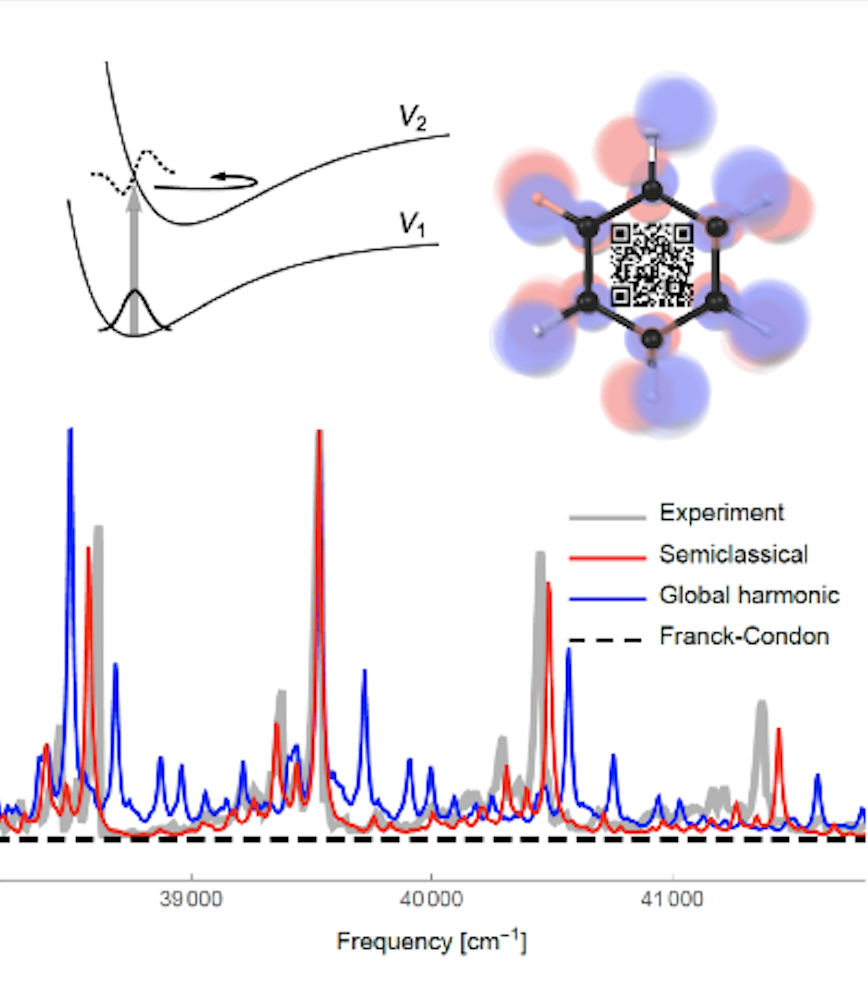Special Seminar: Jiří Vaníček

Jiří Vaníček
École Polytechnique Fédérale de Lausanne
"On-the-fly ab initio semiclassical evaluation of electronic coherences and electronic spectra beyond the Condon and zero temperature approximations"
Abstract:
Vibrationally resolved electronic spectra pose a challenge to the theory of chemical dynamics because an accurate description of such spectra depends both on the quality of the electronic potential energy surfaces and on the inclusion of nuclear quantum effects. On-the-fly ab initio implementation [1,2] of the semiclassical thawed Gaussian approximation [3] addresses both issues simultaneously. Despite its simplicity, this method goes far beyond the standard approaches by including vibrational mode distortion, Duschinsky rotation, and anharmonicity. In this talk, I will describe recent improvements of the method: (1) To describe electronic spectra beyond the Condon approximation, we implemented an extension [4] that captures the Herzberg-Teller contribution due to the dependence of the electronic transition dipole moment on nuclear coordinates; the electronically forbidden transition in benzene provides a beautiful extreme example because the Condon approximation yields a “zero” spectrum (see figure). (2) To speed up calculations, we implemented the single-Hessian approximation [5], which also conserves energy, and (3) to include finite-temperature effects (at zero additional cost!), we combined the method with thermofield dynamics [6]. To demonstrate the theory, I will present examples of absorption, emission, and photoelectron spectra of both floppy and large molecules. I will mention how the ab initio thawed Gaussian approximation can describe time-resolved [7] and two-dimensional [8] spectroscopies, help understand the ultrafast electronic decoherence due to nuclear motion [9], and search for molecules with long-lasting electronic coherence [10]. Finally, I will present recent extensions that account for nonadiabatic effects, tunneling, and wavepacket splitting.
[1] M. Wehrle, M. Šulc, and J. Vaníček, J. Chem. Phys. 140, 244114 (2014).
[2] M. Wehrle, S. Oberli, and J. Vaníček, J. Phys. Chem. A 119, 5685 (2015).
[3] E. J. Heller, J. Chem. Phys. 62, 1544 (1975).
[4] A. Patoz, T. Begušić, and J. Vaníček, J. Phys. Chem. Lett. 9, 2367 (2018).
[5] T. Begušić, M. Cordova, J. Vaníček, J. Chem. Phys. 150, 154117 (2019).
[6] T. Begušić and J. Vaníček, J. Chem. Phys. 153, 024105 (2020).
[7] T. Begušić, J. Roulet, and J. Vaníček, J. Chem. Phys. 149, 244115 (2018).
[8] T. Begušić and J. Vaníček, J. Phys. Chem. Lett., 12, 2997 (2021).
[9] N. V. Golubev, T. Begušić, and J. Vaníček, Phys. Rev. Lett. 125, 083001 (2020).
[10] A. Scheidegger, J. Vaníček, and N. V. Golubev, J. Chem. Phys. 156, 034104 (2022).